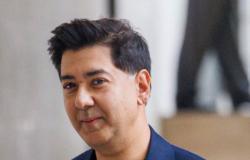Hello and welcome to the details of Iran extends voting hours after supreme leader calls for high turnout in presidential election and now with the details
Nevin Al Sukari - Sana'a - Iranians voted for a new president today following the death of Ebrahim Raisi in a helicopter crash, choosing from a tightly controlled group of four candidates loyal to the supreme leader at a time of growing public frustration and Western pressure. — Reuters pic
DUBAI, June 28 — Iranians voted for a new president today following the death of Ebrahim Raisi in a helicopter crash, choosing from a tightly controlled group of four candidates loyal to the supreme leader at a time of growing public frustration and Western pressure.
The election coincides with escalating regional tension due to war between Israel and Iran’s allies Hamas in Gaza and Hezbollah in Lebanon, as well as increased Western pressure on Iran over its fast-advancing nuclear programme.
Advertisement
While the election is unlikely to bring a major shift in the Islamic Republic’s policies, its outcome could influence the succession to Ayatollah Ali Khamenei, Iran’s 85-year-old supreme leader, in power since 1989.
Khamenei called for a high turnout to offset a legitimacy crisis fuelled by public discontent over economic hardship and curbs on political and social freedom.
“The durability, strength, dignity and reputation of the Islamic Republic depend on people’s presence,” Khamenei told state television after casting his vote. “High turnout is a definite necessity.”
Advertisement
The next president is not expected to usher in any major policy shift on Iran’s nuclear programme or support for militia groups across the Middle East, since Khamenei calls all the shots on top state matters.
However, the president runs the government day-to-day and can influence the tone of Iran’s foreign and domestic policy.
A hardline watchdog body made up of six clerics and six jurists aligned with Khamenei vets candidates, and approved only six from an initial pool of 80. Two hardline candidates subsequently dropped out.
Three hardline candidates, one relative moderate
Three candidates are hardliners and one is a low-profile comparative moderate, backed by the reformist faction that has largely been sidelined in Iran in recent years.
Critics of Iran’s clerical rule say that low and declining turnouts in recent years show the system’s legitimacy has eroded. Just 48 per cent of voters participated in the 2021 presidential election and turnout plumbed a record low of 41 per cent in a parliamentary election in March.
State television showed queues inside polling stations in several cities. Polls were extended for two hours until 1630 GMT due to “people still waiting to vote”, state TV said. Voting is often extended as late as midnight. Authorities said the result would be announced on Saturday.
If no candidate wins at least 50 per cent plus one vote from all ballots cast, including blank votes, a run-off between the top two candidates is held on the first Friday after the result is declared.
Prominent among the remaining hardliners are Mohammad Baqer Qalibaf, parliament speaker and former commander of the powerful Revolutionary Guards, and Saeed Jalili, a former nuclear negotiator who served for four years in Khamenei’s office.
All four candidates have vowed to revive the flagging economy, beset by mismanagement, state corruption and sanctions re-imposed since 2018, after the United States ditched Tehran’s 2015 nuclear pact with six world powers.
“I think Jalili is the only candidate who raised the issue of justice, fighting corruption and giving value to the poor... Most importantly he does not link Iran’s foreign policy to the nuclear deal,” said Farzan Sadjadi, a 45-year-old artist in the city of Karaj.
Divided voters
The sole comparative moderate, Massoud Pezeshkian, is faithful to Iran’s theocratic rule but advocates detente with the West, economic reform, social liberalisation and political pluralism.
“We will respect the hijab law, but there should never be any intrusive or inhumane behaviour toward women,” Pezeshkian said after casting his vote.
He was referring to the death of Mahsa Amini, a young Kurdish woman, in 2022 while in morality police custody for allegedly violating the mandatory Islamic dress code.
The unrest sparked by Amini’s death spiralled into the biggest show of opposition to Iran’s clerical rulers in years.
Pezeshkian’s chances hinge on reviving the enthusiasm of reform-minded voters who have largely stayed away from the polls for the last four years as a mostly youthful population chafes at political and social curbs. He could also benefit from his rivals’ failure to consolidate the hardline vote.
“I feel Pezeshkian represents both traditional and liberal thoughts,” said architect Pirouz, 45, who said he had planned to boycott the vote until he learned more about Pezeshkian’s plans.
In the past few weeks, Iranians have made wide use of the hashtag #ElectionCircus on X, with some activists at home and abroad calling for a boycott, saying a high turnout would only serve to legitimise the Islamic Republic.
“The youth were punished... young girls were killed on the streets... We can’t easily move on from that... After all that happened, it’s unconscionable to vote,” said 55-year-old writer Shahrzad Afrasheh.
In the 2022/23 protests, more than 500 people including 71 minors were killed, hundreds were injured and thousands arrested, rights groups said.
These were the details of the news Iran extends voting hours after supreme leader calls for high turnout in presidential election for this day. We hope that we have succeeded by giving you the full details and information. To follow all our news, you can subscribe to the alerts system or to one of our different systems to provide you with all that is new.
It is also worth noting that the original news has been published and is available at Malay Mail and the editorial team at AlKhaleej Today has confirmed it and it has been modified, and it may have been completely transferred or quoted from it and you can read and follow this news from its main source.





